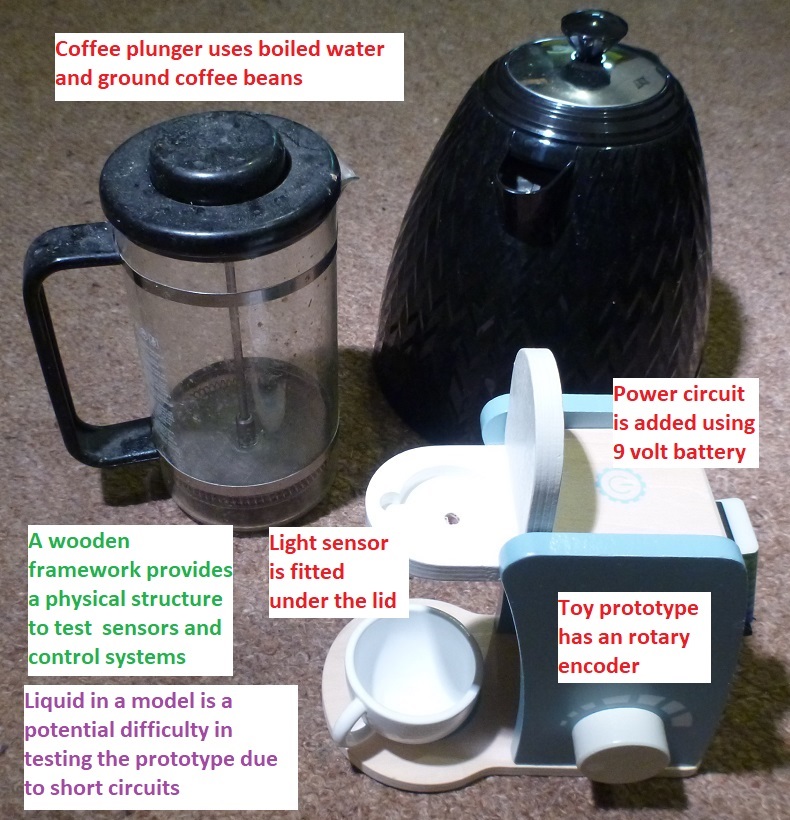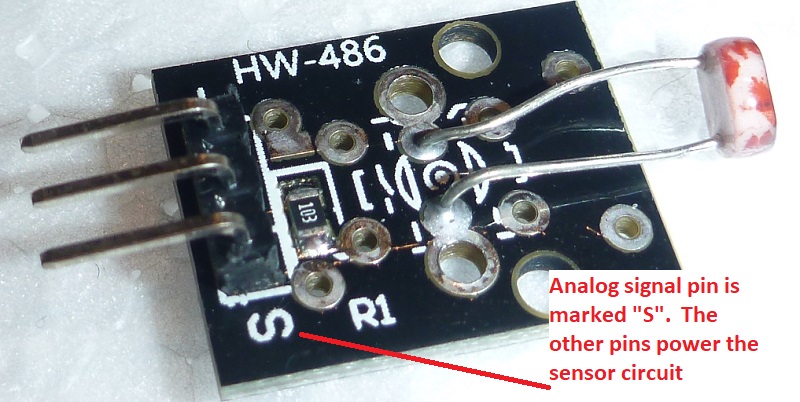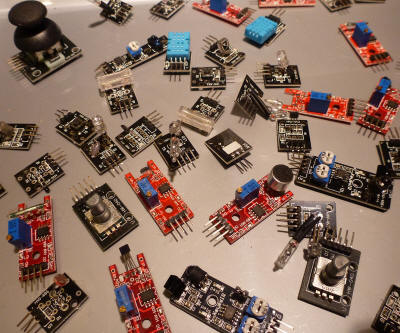Using Analog and
Digital Sensors
Planning a working STEM project involves many steps. Decisions about
the input sensors require an understanding of the different ways the appropriate
sensor might work. On this activity sheet, we will discuss some possible
sensors for the toy coffee machine. The project uses a wooden structure
that has no electronic sensor or control devices. The first task was to
provide a working source of DC electrity. This was done by using a 9 volt
DC battery wired to 5 volt regulators.
The first task is to find an appropriate input device. This item
becomes the sensor.
Please read this week's
Tasks and Activities.
- What was the first task when the toy coffee machine project
began?
- What is the function of the connection marked "S" on the sensor
circuits? ( Hint - read about the analog light sensor
above )
- What is one of the design challenges in producing a working
prototype of an Espresso machine from the wooden prototype shown
above?
- What type of sensor will you use in your STEM project ( Hint ..
does it matter if it is analog or digital? )
- What is one difference between an analog sensor and a digital
sensor?
|
|
|
Don't forget to email your choices/answers
to Mr. Widmer by the end of this week. Keep a copy of that email
in your Google Docs folder.
|
|


